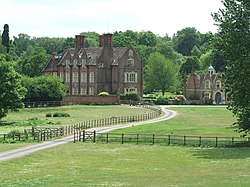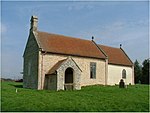Breckland

Breckland in Norfolk and Suffolk is a 39,433 hectare Special Protection Area (SPA) under the European Union Directive on the Conservation of Wild Birds. The SPA partly overlaps the 7,544 hectare Breckland Special Area of Conservation. As a landscape region it is an unusual natural habitat of England. It comprises the gorse-covered sandy heath that lies mostly in the south of the county of Norfolk but also in the north of Suffolk. An area of considerable interest for its unusual flora and fauna, it lies to the east of another unusual habitat, the Fens, and to the south west of the Broads. The typical tree of this area is the Scots pine. Breckland is one of the driest areas in England. The area of Breckland has been substantially reduced in the twentieth century by the impact of modern farming and the creation in 1914 of Thetford Forest. However substantial areas have been preserved, not least by the presence of the British Army on the Stanford Battle Area. During the Prehistoric period Breckland was mined for flint, evidence for which can be found at Grimes Graves just outside Thetford in Norfolk. The word 'Breck' is medieval and was defined as being an area of heathland broken up for cultivation before being allowed to retreat back into wilderness. Up until 200 years ago, much of it consisted of open heathland. The Brecks today are a tourist attraction as well as an area of scientific and geographical interest. The Breckland landscape region has given its name to Breckland District, a local government district that contains most of Norfolk's portion of the Breckland. Part of West Suffolk district cover the Suffolk portion. The Great Eastern Pingo Trail is 8 miles of tracks and paths exploring the eastern edge of the Breckland area. The trail takes in the commons at the villages of Thompson and Stow Bedon, and heathland at Breckles and Great Hockham. Thompson Water, an artificial lake, and the woodland at Thompson Carr also form part of the walk. The name of the trail comes from the former Great Eastern Railway and the large number of pingo ponds found in the area. Pingo ponds or kettle lakes are formed from collapsed mound of earth-covered ice, called pingos, formed when the ice-sheets retreated. The trail may be accessed as a detour from the Peddars Way long-distance footpath. It is a Local Nature Reserve.
Excerpt from the Wikipedia article Breckland (License: CC BY-SA 3.0, Authors, Images).Breckland
Nordsternweg, Essen Katernberg (Stadtbezirk VI)
Geographical coordinates (GPS) Address Nearby Places Show on map
Geographical coordinates (GPS)
| Latitude | Longitude |
|---|---|
| N 52.5 ° | E 0.76666666666667 ° |
Address
Kolonie Zollverein III (Schlägel & Eisen)
Nordsternweg
45327 Essen, Katernberg (Stadtbezirk VI)
Nordrhein-Westfalen, Deutschland
Open on Google Maps










